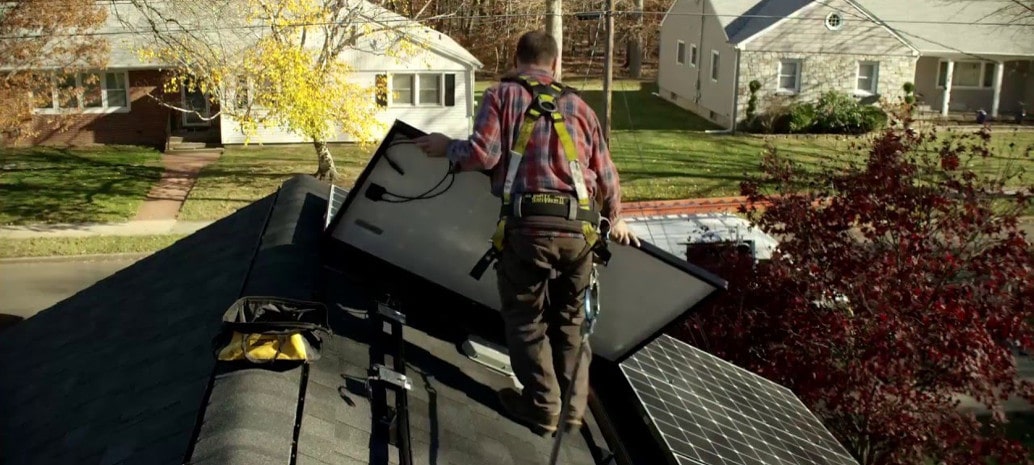Early on the morning of May 9, the Connecticut House approved a bill that will dismantle net metering in the state, to be replaced with a complex successor system of compensation for behind-the-meter solar. The bill had earlier passed the Senate, and as it was introduced by the Office of Governor Dannel Malloy, it is assumed that he will sign it.
Many details of the new structure and what this will mean for the market are not clear, so we sat down with Vote Solar Northeast Regional Director Sean Garren in order to provide a better understanding of the system the bill creates and what to expect.
pv magazine: Can you talk about how you expect rates to be set for the two options under Connecticut’s successor program to net metering?
 Sean Garren: There will be two options for distributed solar customers. That includes projects under 2 MW. They will have the option to either enter into a buy-all, sell-all arrangement, with two separate meters and no on-site consumption.
Sean Garren: There will be two options for distributed solar customers. That includes projects under 2 MW. They will have the option to either enter into a buy-all, sell-all arrangement, with two separate meters and no on-site consumption.
Or they can retain the right to consume their own generation on site, and have a new tariff rate for their export, and net excess generation only. So those are the two basic structures. And then how those structures actually work, and what they get for a rate, under either of those structures, is where a fair amount of deliberation will take place in the future.
pv magazine: When I read the bill, it said that the export rate is going to be calculated in real time. How will that be achieved, and what sort of timeframe do you expect exports to be calculated on?
Garren: The export rate won’t actually change in real time, but the netting may take place in real time. So your on-site consumption could be based on your instantaneous consumption versus generation.
PURA will have the ability to decide what the netting period is, with the options being anything a day or less. So it could be daily netting, it could be instantaneous, it could be other increments.
pv magazine: Does Connecticut’s current metering infrastructure have the ability to calculate in 15-minute intervals or less? How close to real-time can it get?
Garren: My understanding is that many utility customers do in fact have bidirectional metering, so it measures what goes out and what comes in to a home. Which would be able to provide you with the instantaneous export versus consumption. You would not know what the person is consuming on-site, necessarily, without checking the meter on the actual PV system, but if you check it in a month, you will know that they exported instantaneously over that month.
Anything like daily would in fact take a different meter. You would have to install some sort of interval meter that was recording different periods of time throughout the month.
pv magazine: Can you give some insight as to how these two rates will be calculated?
Garren: This is in relatively vague terms in the bill, so forgive my not knowing all of the details, because I don’t think anyone does yet.
PURA essentially has two options for setting this rate. One is to conduct a procurement, essentially a competitive solicitation, for projects, and then take the bids of those projects and set the rate for where those bids came in. The second option is to do some sort of research or analysis to figure out what the average cost of a system is, and then add on what they consider to be a reasonable rate of return. Which would essentially make this portion of the solar industry a regulated entity similar to electric utilities in getting a defined rate of return on their investment.
That is something we haven’t seem much nationwide.
pv magazine: Those are two radically different options in terms of payback for customers.
Garren: Yes. From my understanding of Connecticut’s solar policy and the way they’ve pursued these things in the past, they are hoping to take the competitive option. They have run competitive solicitations for ZRECs and LRECs – Zero Emission Renewable Energy Credits and Low Emissions Credits.
So that is a structure they are particularly fond of. Moving forward my expectation is that is their intention. They have left themselves room to more administratively set a tariff rate. Perhaps if the solicitations were not as competitive as they wanted, or didn’t return the value they thought they would see.
pv magazine: When we talk about solicitations, what specifically in terms of technology and system size are we talking about to set the energy value for rooftop PV? Will this be auctions of all new technology including gas plants at utility-scale? Will this be solar, and if it is solar will it be solar at the same scale as rooftop?
Garren: The auctions would be 2 MW or less, so not including utility-scale, to be sure. And I believe it would include only class 1 renewables – so relatively clean technologies. And primarily solar based on the way these things have worked in the past. Although there is a separate solicitation for fuel cells, which is another program within Connecticut’s distributed generation technology portfolio.
So primarily we are looking at solar in 2 MW or less.
In terms of how they would set the values for residential versus those projects, it’s not clear yet or in this legislation. It does say that the value is based on a competitive procurement, but it could be that they may change the credit value for residential customers, assuming a different cost for installation, and different value. There may be some leeway for them in that.
They could also go out and bid for a portfolio of projects, to sort of aggregate customers, so that individual customers don’t have to enter a competitive solicitation. That is certainly the devil that we are awaiting in these details.
pv magazine: Certainly the price you would pay for the output of a 1.9 MW plant is radically different on an LCOE basis than a rooftop solar project. Is there a danger that they will use that price to set the amount that they are going to pay for rooftop solar?
Garren: There is certainly a danger. And if you look at the Comprehensive Energy Strategy and the conversations that have happened around that, that many points in this bill reference as a guiding document, it’s pretty obvious that the Department of Energy and Environmental Protection (DEEP) in Connecticut is not favorable to distributed generation and does not see or recognize the value of projects that are at the point of load, as opposed to over the transmission system.
It certainly is a possibility that they could shut down the residential market by restricting that value to the same as what a 2 MW system could get. That said, there is a great deal of political will behind residential solar, so I’m not expecting that will be the case. Because I do think that they don’t want to face a truly dead residential market.
Although they are toying with that.
pv magazine: What is the end result that you expect here for Connecticut’s distributed solar market?
Garren: I think this is going to really restrict the distributed solar market in Connecticut. I think we are going to see in the near term a cap on growth in the market. So the market in Connecticut will not accelerate or grow beyond what it already is.
And once the residential system comes fully into force, which happens a couple of years from now, after the residential incentive system goes away, I think we will see a severe contraction of residential solar in the state.
pv magazine: Is there a possibility of a short-term boom, with people trying to get systems on as fast as they can, while net metering is still available?
Garren: There is some potential for that, but I think companies want to know that there is a long-term market, and want to play in places where they believe there is potential for a long-term market.
We may see a little uptick, but I don’t think you are going to see any companies opening new offices or really expanding into Connecticut, given that they have a short window in which to capitalize on providing customers with the option to go solar.
pv magazine: This is being done in the same bill that is raising Connecticut’s RPS targets to 40% by 2030. How is Connecticut supposed to meet its RPS targets if it eliminates the most easily sited form of renewable energy in the state?
Garren: That is certainly a rub, that I think the Connecticut legislature and governor have walked right into.
I expect that they will continue as they have done so far, importing the vast majority of their renewable energy, and energy in general, from out of state, sending those jobs and dollars to states that have a more favorable policy landscape and a more favorable landscape period.
This content is protected by copyright and may not be reused. If you want to cooperate with us and would like to reuse some of our content, please contact: editors@pv-magazine.com.









The utilities are going to meet their RPS by entering into contracts with Quebec Hydro like they have tried to do in MA. What this results in is no jobs for CT, no new renewable sources in CT or out of CT and no local grid benefits. They still will need transmission which both NH and ME do not want through their States. I hope I am wrong ……